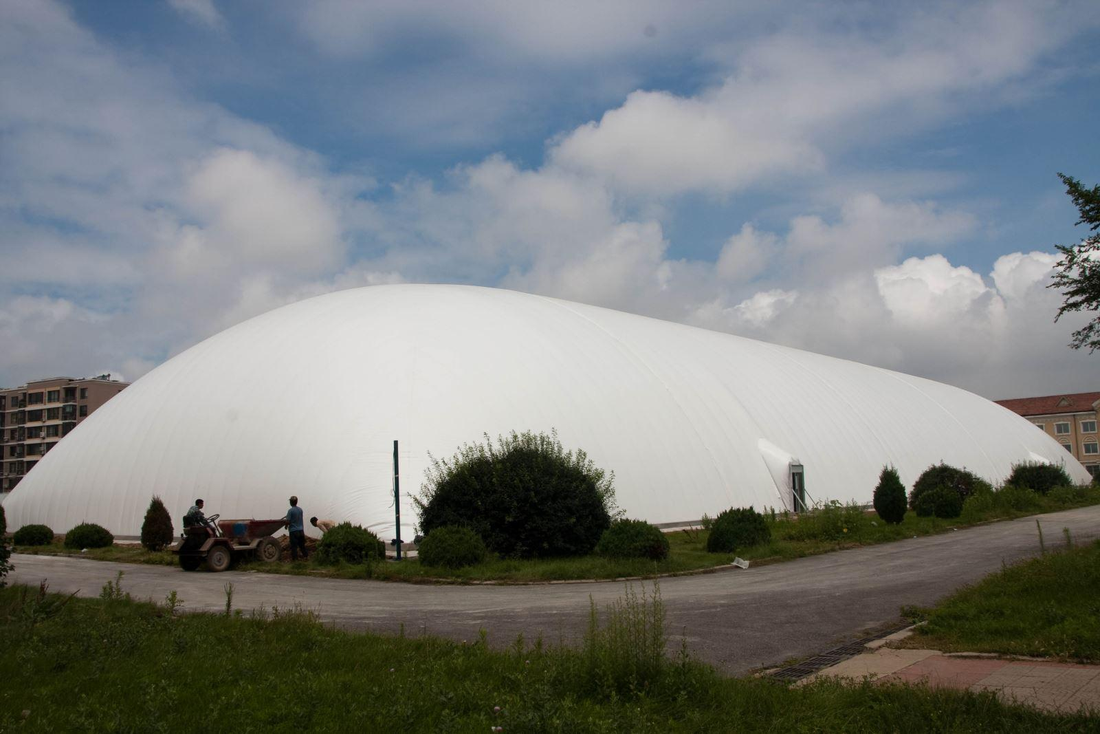
The Critical Role of Stress in Membrane Structures
Share
Membrane structures are known for their lightweight, flexible, and aesthetic appeal, but their stability and durability rely heavily on stress application, particularly prestress. In this article, we explore how stress contributes to membrane architecture and how precision prestress control is achieved in manufacturing.
Ensuring Structural Stability
Formation of a Stable Surface
Membrane structures lack inherent rigidity, making them dependent on prestress to maintain their form. By applying tension, the membrane fabric is stretched into a stable curved surface. Tensile structures, such as those seen in the Denver International Airport terminal, utilize cables and masts to keep the fabric in tension, ensuring stability and longevity.
Resistance to External Loads
Prestress enhances the membrane’s ability to distribute external forces such as wind, snow, and self-weight evenly across the surface, preventing stress concentration.
- Wind Load: The membrane experiences tensile stress that counters wind forces, improving wind resistance.
- Snow Load: Adequate prestress provides the necessary rigidity to support accumulated snow, preventing excessive deformation or failure.
Enhancing Mechanical Performance
Increasing Tensile Strength
Membrane materials exhibit high tensile strength but lack resistance to compression and bending. Prestressing ensures that the fibers within the membrane are fully engaged, maximizing their load-bearing capacity. This allows membrane structures to handle significant loads with minimal material thickness, achieving a lightweight yet high-strength design.
Optimizing Stress Distribution
A well-designed prestress distribution minimizes stress imbalances under varying load conditions. For example, in conical membrane structures, adjusting prestress levels around the perimeter reduces the risk of localized stress concentration, improving overall mechanical stability. Engineers can tailor prestress values in different directions to optimize performance under different loading scenarios.
Enabling Architectural Versatility
Creating Complex and Artistic Forms
Prestress allows architects to design intricate and dynamic membrane structures. From free-form roofs to artistic tensile facades, controlled tensioning enables unique and futuristic designs. The Sydney Opera House, for example, incorporates membrane-inspired design elements to achieve its iconic look.
Maintaining Shape Stability
Throughout its lifespan, a membrane structure must retain its intended shape. Prestress ensures that environmental factors do not cause sagging, wrinkling, or deformation, preserving the structure’s aesthetic and functional qualities over time.
Improving Cost Efficiency
Reducing Structural Support Requirements
Since prestressed membranes can bear significant loads independently, the need for extensive support structures is reduced. This minimizes the use of columns, beams, and other framework elements, leading to material savings and lower project costs.
Lowering Installation and Maintenance Costs
The lightweight nature of membrane structures, combined with prestress application, simplifies installation. The reduced weight leads to faster assembly, lower labor costs, and minimized on-site adjustments. Furthermore, prestress enhances the membrane’s durability, reducing long-term maintenance expenses.
Precision Prestress Control in Manufacturing
Mechanical Tensioning: The Art of Force Precision
In the production process, achieving accurate prestress application requires meticulous control. Using advanced machinery, precise tensioning forces are applied in multiple directions, ensuring uniform stress distribution across the fabric. This level of precision optimizes fiber alignment at a microscopic level, laying the foundation for superior mechanical performance and longevity.
At uctextile, we specialize in producing high-performance PVC and TPO membrane materials designed for architectural applications. Our advanced prestress control techniques ensure optimal durability, weather resistance, and structural integrity for modern membrane structures.
For inquiries about our high-quality membrane materials, contact us at uctextile.com.
